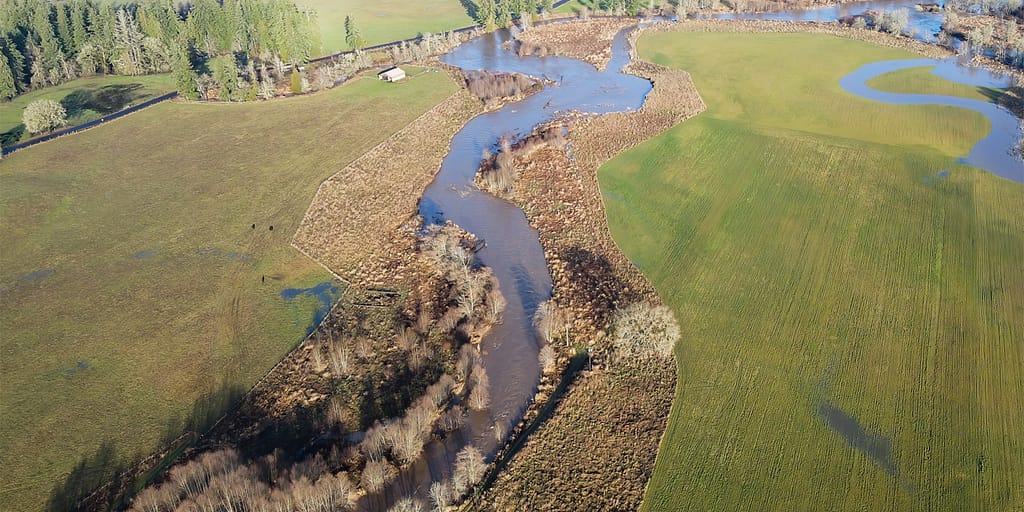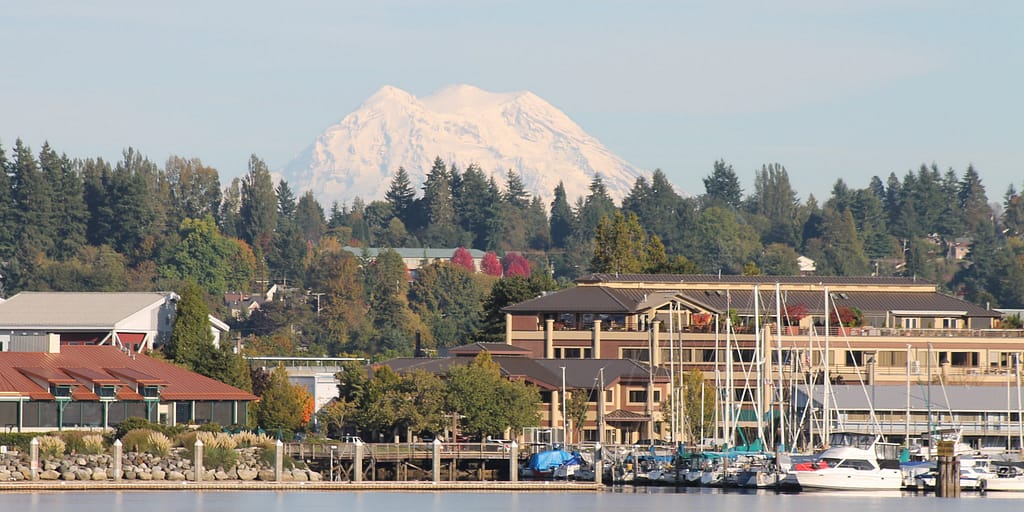Here in the Pacific Northwest, we are used to weather of all kinds – the long weeks of blue sky and mild temperatures of summer; misty foggy cloudy days of spring and fall; the all-out raging rains and winds of wintertime; and the occasional extremely hot day, thunderstorm, or snowstorm.
This article will discuss how our region’s weather is morphing over time, what that will mean for people and nature, and how we can better prepare for these changes as a community.
Changes in our Weather
Over the last two hundred years, the earth’s atmosphere has changed because of people and our activities. Driving, industry, and various land uses have resulted in our atmosphere accumulating small particles and gases which trap heat from the sun and over time warm our atmosphere and our oceans. This warming is causing measurable changes in our weather, though these changes vary from place to place.
The consequences for weather patterns here in the Pacific Northwest and South Puget Sound include increased numbers of heavy rainstorms, and increased numbers of very hot summer days. From year to year these changes may seem slight, but they have a combined effect over several decades. Changes to our weather will change our landscape, and change the way people, fish, and wildlife interact with each other.
Science indicates that sea level rise and flooding are changes we can expect to experience in our region. As temperatures rise and weather patterns change, experts are predicting increased snow and ice melting and heavier rainstorms in the coming decades. These trends will combine with tides to cause more frequent and larger-scale flooding in areas where freshwater meets salt water. This includes culturally important and populated areas like downtown Olympia.
Methods of Planning for Natural Disasters

(Resilience and transition strategy) Stillman Creek Riparian Preserve conserved and planted with native trees, Mike Melton
To be prepared for changes like sea level rise, planners and land managers are using a concept called climate adaptation, which means taking actions to reduce vulnerability to climate change effects. The idea is that we can adapt or change certain features of our landscape to account for predicted sea level rise, flooding, and more.
Different approaches to climate adaptation fall into three categories: resistance, resilience, or transition.
A resistance strategy will maintain current conditions and protect the landscape from change by constructing defenses (like building sea walls or spraying trees to resist infestation).
A resilience strategy will accommodate some degree of change or disruption (like flooding) but will allow the landscape to return to “normal” after the disturbance. An example of a resilience strategy is maintaining buffers of plants and trees along a shoreline to absorb flooding and not building within those buffers.
A transition strategy intentionally changes the landscape in some way to make it better able to withstand future changing conditions. For example, transition climate adaptation strategies might include growing plants or trees more suited to future conditions or moving a trail to a less flood-prone area.
What’s Next for Olympia
The City of Olympia has created a sea level rise plan to address how downtown will adapt to and prepare for climate and sea level changes that will increase flooding downtown. The City’s plan emphasizes that with just 12-inches of sea level rise, what we call a 100-year flood event could occur every other year. This would have serious consequences for life in the city.
The city has identified several climate adaptation strategies for the near, mid, and long term. Several of these strategies have already been put into action. Those elements of the plan are briefly summarized below:
Near Term (2019-2024, up to 6 inches of sea level rise) –
the city is installing backflow prevention on vulnerable stormwater outfalls.
Mid Term (2030-2050, up to 24 inches of sea level rise) –
flood-proof sensitive areas, like Budd Inlet Treatment Plant. The city plans to construct floodwalls, berms, and flood gates, and may raise shoreline parks and trails.
Long Term (2050-2075, up to 68 inches of sea level rise) –
flood-proof and protect vulnerable infrastructure. Raise Fourth Avenue, Columbia, Water Street, and other streets as needed. Increase flood storage and pumping capacity at various sites.
Planners and land managers are making hard decisions about how to plan for the future ahead.
Read about Olympia’s sea level rise plan to learn about sea level rise science, the city’s proposed actions, and how those actions will be funded. Do these adaptation strategies fall under the categories of resistance, resilience, or transition?



